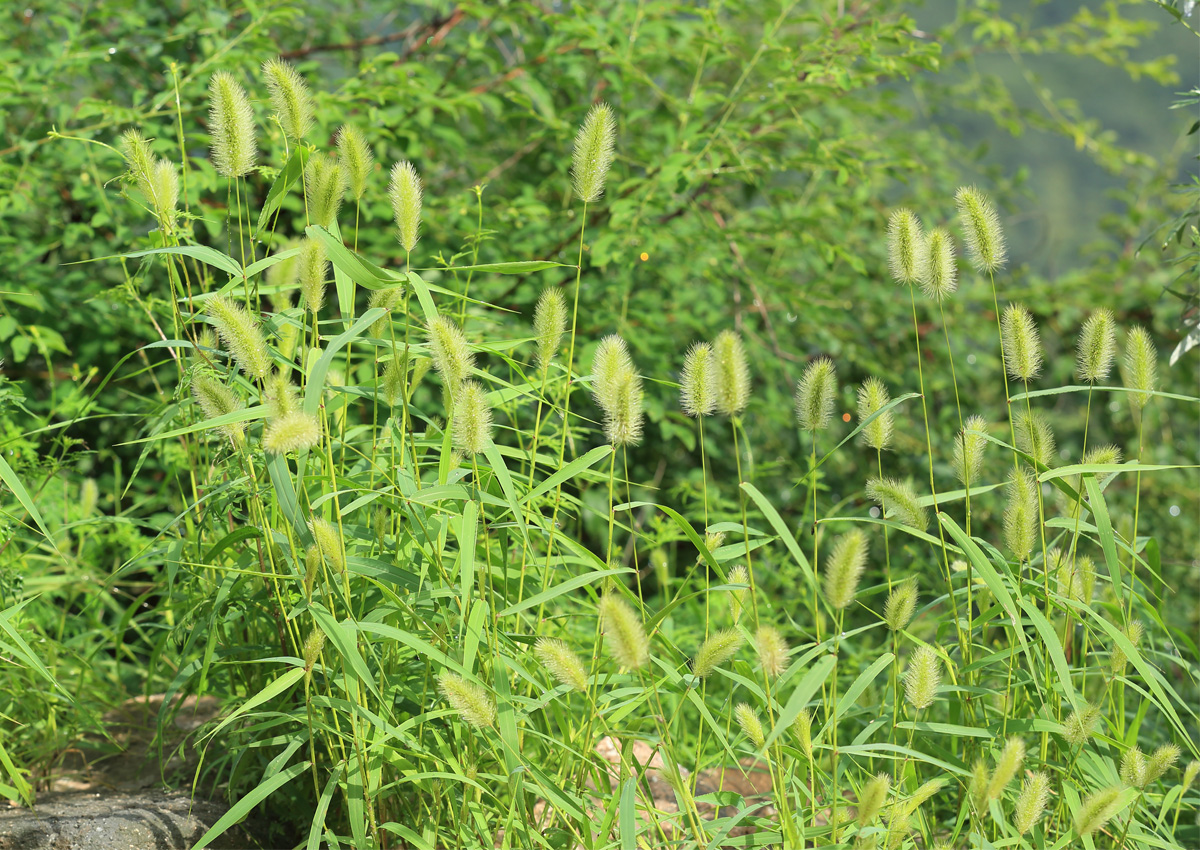
Researchers Sequence Genomes of 600 Green Millet Plants, Find Gene for Dispersal
October 7, 2020| |
Dr. Elizabeth Kellogg and her team at Donald Danforth Plant Science Center (Danforth Center) has generated the genome sequences of nearly 600 green millet plants and released a very high-quality reference Setaria viridis genome sequence. Their analysis also led to the identification of a gene related to seed dispersal in wild populations for the first time.
For years, Dr. Kellogg and other researchers at Danforth Center drove up and down the highways of the continental United States, occasionally pulling over to the side of the road to collect small weedy plants and bring them back to the lab. These weedy plants are green millet, a small model grass with a short lifecycle that uses the C4 pathway which particularly helps plants thrive in warm, arid environments. Corn and sugarcane are among the major high-yield C4 crops, as are the candidate biofuel feedstocks Miscanthus and switchgrass.
Seed dispersal is critical for plants in the wild, but it is an undesirable trait for domesticated crops because it leads to reduced harvest yields. Over thousands of years, farmers have selected cereal plants without this shattering trait. Through association mapping, the team identified a gene called Less Shattering 1 (SvLes1) and gene editing studies confirmed that it was involved in shattering by turning it off.
The genome data also revealed that green millet was introduced into the United States multiple times from Eurasia. The team also identified a gene associated with leaf angle, which determines how much sunlight leaves can get and in turn serves as a predictor of yield.
For more details, read the news release from Danforth Center.
| |
You might also like:
- Scientists Sequence Genome of Broomcorn Millet
- Millet Genome Sequenced by Scientists from 10 Countries
- Scientists Decode Finger Millet Genome
Biotech Updates is a weekly newsletter of ISAAA, a not-for-profit organization. It is distributed for free to over 22,000 subscribers worldwide to inform them about the key developments in biosciences, especially in biotechnology. Your support will help us in our mission to feed the world with knowledge. You can help by donating as little as $10.
-
See more articles:
-
News from Around the World
- Researchers Sequence Genomes of 600 Green Millet Plants, Find Gene for Dispersal
- Paraguay Simplifies Procedures in the Approval of GE Crops
- Transgenic Hybrid Corn Harvest Boosts Cuba's Confidence in Corn Yield
- FSANZ Seeks Public Comment for GM Corn Approval
- Farmer Survey Reveals Significant Economic, Environmental Benefits From GM Corn in Vietnam
- Research Explains Farmer Reluctance to Adopt New Technologies
- Gene for Resistance to Devastating Tomato Virus Now Identified
-
Research Highlights
- Meta-analysis Detect Candidate Rice Genes Involved in Salt Tolerance
-
Plant
- DNA-Free Screening System for Gene Editing in Hot and Sweet Bell Peppers
- Scientists Explore on Genetic Transformation of Mosquitoes
- Researchers Develop Pale Purplish-Pink Petunia via CRISPR-Cas9
-
Health
- Researchers Engineer Drug-Like Compounds that Disable SARS-CoV-2's Replication Engine
-
Read the latest: - Biotech Updates (December 17, 2025)
- Gene Editing Supplement (December 17, 2025)
- Gene Drive Supplement (February 22, 2023)
-
Subscribe to BU: - Share
- Tweet

